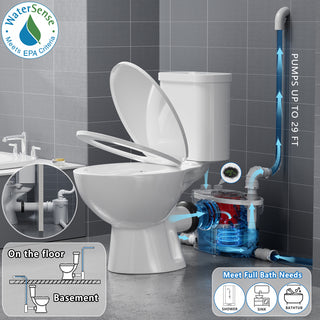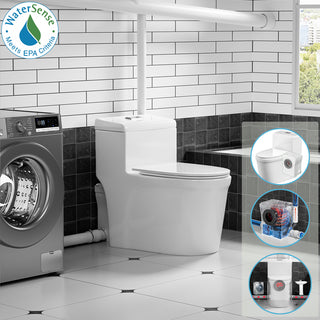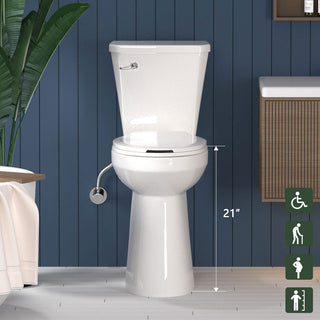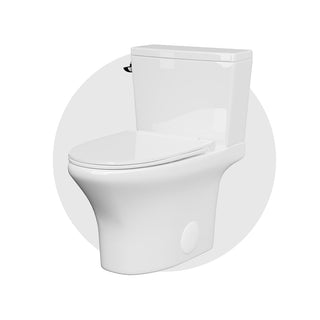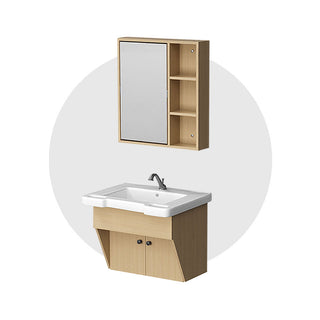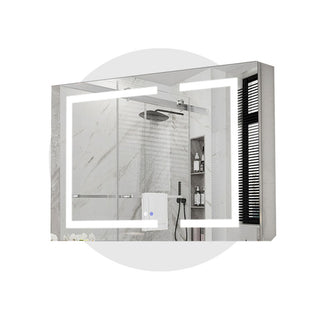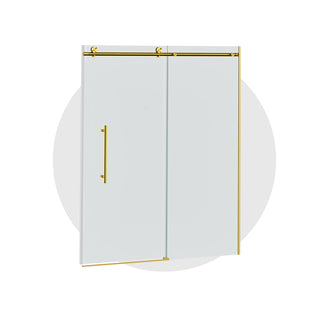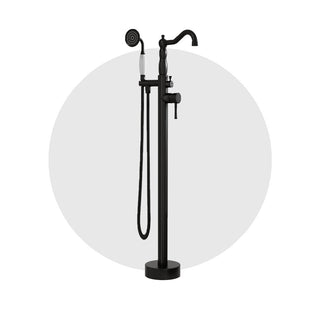When browsing toilet specifications, you might come across the term “fully glazed trapway.” It sounds technical—but does it actually matter? And should it influence your purchasing decision?
Let’s explore what a fully glazed trapway is, how it impacts performance, and whether it's worth seeking out when shopping for a toilet.
I. A Hidden Craft in Toilet Manufacturing: The Role of Glazing
In toilet manufacturing, glazing refers to the process of applying a vitreous ceramic coating to porcelain surfaces before firing them at high temperatures in a kiln. This creates a non-porous, glass-like finish that’s smooth to the touch—resulting in the shiny, easy-to-clean surface we associate with quality toilets.
But glazing does more than enhance appearance. It’s a key factor in a toilet’s durability, hygiene, and long-term performance, helping resist stains, odors, mineral buildup, and bacterial growth.
II. What Is a Fully Glazed Trapway?
A fully glazed trapway means that the entire interior surface of the trapway—top to bottom, front to back—is coated with the same smooth ceramic glaze used on the bowl. This ensures a continuous, non-porous finish throughout the waste channel.
This differs from a partially glazed trapway, which may only have the glaze applied to some sections, or may have thinner or inconsistent coating on the inner walls. Non-glazed sections can be rougher and more porous, making waste more likely to stick.
III. Benefits of a Fully Glazed Trapway
Choosing a toilet with a fully glazed trapway can lead to noticeable long-term benefits:
✅ Reduced Friction = Better Flush
A smooth trapway allows waste and water to move more efficiently with less resistance. That means a cleaner bowl after one flush and less chance of needing a second try.
✅ Less Buildup = Fewer Clogs
Porous, unglazed surfaces can trap debris and encourage buildup over time. Glazing reduces this risk, helping to maintain a clear and functional waste path.
✅ Improved Long-Term Hygiene
A smoother surface is easier to keep clean—and less likely to harbor bacteria, stains, or odors. That means better bathroom hygiene for years to come.
IV. Is It Worth Paying More For?
In most cases, the price difference between toilets with a fully glazed trapway and those without is minimal—often just a few dollars more.
Considering the potential for:
- fewer clogs
- better flushing performance
- easier maintenance
…it’s a smart investment. Especially in households with high usage or in rental units where reliability matters, a fully glazed trapway often pays for itself in fewer plumber calls.
V. Which Toilets Typically Offer This Feature?
Many reputable toilet brands offer fully glazed trapways as a standard or highlighted feature. Look for it in the specifications of brands like:
- Simple Project
- TOTO
- Kohler
- American Standard & More
VI. How to Tell If a Trapway Is Fully Glazed
Here’s how you can confirm whether a toilet has this feature:
🔍 Check the product specification sheet
Look for phrases like:
- “fully glazed trapway”
- “100% glazed internal passage”
- “2" fully glazed internal diameter”
🛠 Watch for marketing terms
Manufacturers may also use terms like “smooth trapway,” “easy-clean trapway,” or “glazed internal channels.” These usually point to a fully glazed finish but confirm when possible.
If the listing doesn’t mention it at all, you may also check the technical specs or ask the manufacturer if you're unsure.
Final Tip: Fully Glazed Is Always a Bonus—Never a Drawback
There’s really no downside to a fully glazed trapway.
✅ It doesn’t increase water usage.
✅ It doesn’t require maintenance.
✅ It doesn’t add significant cost.
What it does add is long-term reliability, hygiene, and performance. In other words, it’s a small detail that brings big value—especially if you’re already investing in a quality toilet.
FAQ
❓ Is a non-glazed trapway a dealbreaker?
Not necessarily—but it may mean more frequent clogs or stains over time. If you’re comparing two otherwise similar toilets, opt for the fully glazed model when possible.
❓ Can I glaze a trapway later?
Unfortunately, no. Glazing is part of the high-temperature kiln process used during manufacturing. It’s not something that can be added after purchase.
❓ Does glazing affect water usage?
No. The trapway glaze doesn’t impact how much water a toilet uses—it simply helps water and waste move more efficiently through the system.
In summary: If you're aiming for the best trapway finish, a fully glazed trapway toilet is a subtle but meaningful upgrade. It won’t show off—but it will show up when it counts.


